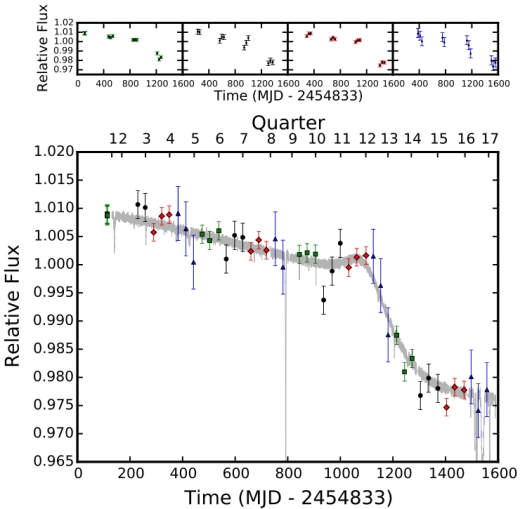- Banned
- #26
20% just think about the size of whatever is obscuring the star... Considering it's a large star to begins with
Will be very interesting finding out what it is
Will be very interesting finding out what it is
Follow along with the video below to see how to install our site as a web app on your home screen.
Note: This feature may not be available in some browsers.
20% just think about the size of whatever is obscuring the star... Considering it's a large star to begins with
Will be very interesting finding out what it is
Borrrrring.my moneys on gases that will eventually form a gas giant or binary star.
think about it, jupitar is about a tenth the size of our sun but if it was primordial and the gases hand not yet coalesced it would basically appear as a shadow if it were closer to the sun.
given that we've found many gas giants far closer to suns then we expected this is a strong possibility and accounts for the faster rotation.
No you want it to be the admiral Thrawn in a new star killerBorrrrring.
I want it to be aliens.
Yeah but a gas planter that size would be a star not formed, 20% is pretty big hopefully they can discover whatever it is.
I think the paper ruled out these options, particularly the star one, but i don't have the concentration to process the scientific language of it.regular gas giants can not be formed that big a super jupiter perhaps, it depends upon the material.
Hap-P-1B for example has a diametre of 192,000 Km's.
This Star KIC 8462852 diameter is about two million eighty-eight thousand km's
20% of that is about 417,600KM's
but the object(s) itself can be far smaller than that depending on distance. Dipping by 20% does not mean the object is 20% of the stars mass, a currently forming gases cloud is a reasonable explanation.
and there's always the possibility that this cloud could form into a second star once the materials were brought together simply due to mass.
i'm not saying its currently a gases giant i'm saying it's a gases could possibly still forming into a gas giant, once fully formed these gases would have condensed into the planet reducing its over all area.
I think the paper ruled out these options, particularly the star one, but i don't have the concentration to process the scientific language of it.
http://arxiv.org/pdf/1509.03622v1.pdf
Yeah the comet theory has almost been dismissed as it would have to be a very large cluster to block 20% of the star's light.....
FWIW I don't think it'll be a Dyson sphere ... But whatever it is will be very interesting as I haven't seen NASA so confused before
If they've reached that stage on the Kardashev scale they could well be generating their own, smaller version stars through Nuclear reaction containment, meaning they could have significantly smaller Dyson Spheres around artificially created light generation sources. The point of the Dyson Sphere being of course to absorb 100% of the stars output.
So kind of like an agent in the music industry.
Zing!!


Source said:We obtain accurate relative photometry of KIC 8462852 from the Kepler full frame images, finding that the brightness of KIC 8462852 monotonically decreased over the four years it was observed by Kepler. Over the first ~1000 days, KIC 8462852 faded approximately linearly at a rate of 0.341 +/- 0.041 percent per year, for a total decline of 0.9%. KIC 8462852 then dimmed much more rapidly in the next ~200 days, with its flux dropping by more than 2%. For the final ~200 days of Kepler photometry the magnitude remained approximately constant, although the data are also consistent with the decline rate measured for the first 2.7 yr. Of a sample of 193 nearby comparison stars and 355 stars with similar stellar parameters, 0.6% change brightness at a rate as fast as 0.341 +/- 0.041 percent per year, and none exhibit either the rapid decline by >2% or the cumulative fading by 3% of KIC 8462852. We examine whether the rapid decline could be caused by a cloud of transiting circumstellar material, finding while such a cloud could evade detection in sub-mm observations, the transit ingress and duration cannot be explained by a simple cloud model. Moreover, this model cannot account for the observed longer-term dimming. No known or proposed stellar phenomena can fully explain all aspects of the observed light curve.
Hard to fathom the sheer size of whatever is blocking this starJust something i would like to quote from one of the video's i watched that i thought was pretty mindblowing.
''A huge gas giant planet like Jupiter which is 122 times larger than the Earth, only blocks 1% of starlight.''
''Whatever is around this star is blocking starlight in the ballpark of 20%''
